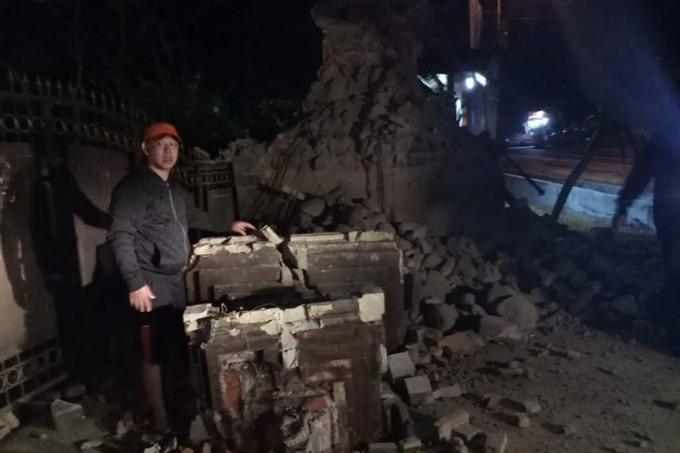 World
World

Three people were killed and houses were damaged after a magnitude 6.3 earthquake struck off East Java province and Bali at around 2am on Thursday. Not much damage, however, was reported, the Indonesian government said.
 |
| Three people were killed and houses were damaged after a magnitude 6.3 earthquake struck off East Java province and Bali at around 2am on Thursday. Photo BNPB |
JAKARTA — Three people were killed and houses were damaged after a magnitude 6.3 earthquake struck off East Java province and Bali at around 2am on Thursday. Not much damage, however, was reported, the Indonesian government said.
The three victims were residents of Sumenep, East Java, and were asleep when their house nearly collapsed after the shallow quake, 12km underground, Indonesian disaster management agency (BNPB) said in a statement. The United States Geological Survey recorded the quake as having a magnitude of 6.0.
The quake’s epicentre was 55km north-east of East Java. Indonesia’s most populous Java island is right next to the main tourist island of Bali, where the International Moneytary Fund and World Bank annual meetings are being held this week.
"The quake didn’t trigger any tsunami for sure," Ms Dwikorita Karnawati, head of Indonesia’s meteorology, climatology and geophysics agency (BMKG), told AFP.
"Wow, that was really strong and it lasted a long time," AFP reported, citing a woman named Davy who took refuge in the carpark of a Bali hotel, several kilometres from the IMF-World Bank meetings’ venue.
AFP reported that some guests at hotels in Nusa Dua, south of Bali’s main international airport, briefly fled outside after the strong tremor shook the building.
Most affected areas, however, were in Sumenep, East Java, which were exposed to higher tremors felt from the quake – and residents felt the tremors for between two seconds and five seconds -- due to its closer proximity to the epicentre. Bali received less tremors.
Indonesia sits on the Pacific Ring of Fire, making it vulnerable to earthquakes as well as volcanic eruptions.
"Based on our analysis of the earthquake map, its corresponding intensity was felt between III and IV Modified Mercalli Intensity scale (MMI), or between light and moderate. Generally, there is not much damage impact from the quake," Dr Sutopo said in the statement.
Last month, a magnitude 7.4 earthquake in Central Sulawesi killed more than 2,000 people and destroyed tens of thousands of houses. This came after earthquakes in Lombok, east of Bali, killed more than 500 in August.
Residents in the affected areas in Central Sulawesi were exposed to intensity VI-VII MMI.
“Intensity IV MMI could cause doors, windows to produce cracking sound. Intensity III would feel like you are near a passing truck,” Ms Dwikorita told Elshinta radio.
“Intensity V could cause most of the items in a house to sway, with some of them falling on the floor. Intensity VI could cause a wall, part of a house to collapse,” she added.
She explained that serious damage to houses would normally occur only at intensities above V MMI, but it is not always so in many cases in Indonesia because of the poor construction quality and design.
Besides a quake’s magnitude, corresponding intensity and how strong the ground the house is built on are key factors affecting the impact in the aftermath, Ms Dwikorita also said in a phone interview with Elshinta radio.
BMKG recorded 13 aftershocks within five hours of the quake, with the magnitude on a declining trend. The latest recorded aftershock was a magnitude 2.5 at 6.50am local time.
“The quake has no tsunami potential. Residents should not panic or rush to higher ground,” Ms Dwikorita added. — The Straits Times/ANN




